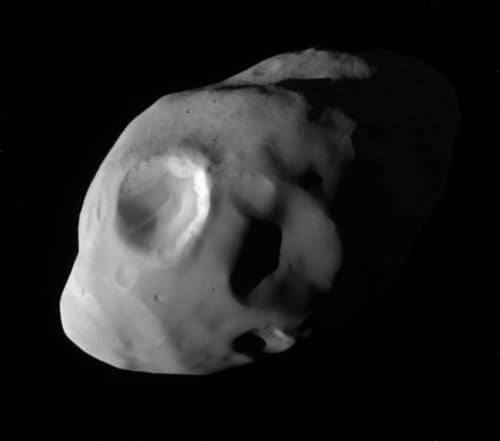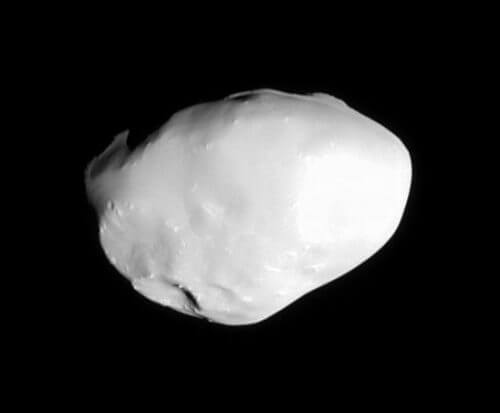New images of the Cassini probe, now starting the The final stages of its mission around Saturn, revealing new details about the distant planet's moon Pandora.

Due to the transit distances of the Cassini spacecraft years ago from Saturn's moons - Pandora and Telesto - it is possible to examine large parts of their surface. The larger of the two is Pandora, whose dimensions are 62 x 84 x 114 km, and its distance from Saturn is 2.35 Saturn radii. It is considered a shepherd moon of the F ring from its outer side. Telesto is 24 km long and its distance from Saturn is 4.88 Saturn radii. In those surfaces that were first exposed to the cameras of the Cassini, you can see that Pandora is denser with craters. What they both have in common is the dust that covers their surface. The amount of dust on Pandora is smaller than on the surface of Telesto. The dust on Pandora can be explained by the moon sweeping it from the F ring that it accompanies, but where did the thick layer of dust on Telesto come from? This moon is far from the rings. This can be explained in two ways. It is possible that in the past it was itself a shepherd moon for the F ring, swept into it a lot of dust and for whatever reason, perhaps a collision with another moon, was thrown into a more distant orbit. Another possibility is that it once moved somewhere else in the solar system near a large dust cloud and for whatever reason was captured by Saturn's gravity.
A few days ago on December 18.12.2016, 40,000, the Cassini spacecraft passed within 240 km of Pandora - the shortest distance of its passage so far. One of the photographs had a resolution of XNUMX meters per pixel. Although this is only a part of the monthly, one can distinguish many details in these photographs. The dust covering the surface is visible. It is possible to distinguish the interior of the large craters. The prominent crater is the one in the center of the picture. It is very unusual compared to the other craters. A significant part of the inner slopes is very bright. There is a strong reflection of sunlight. It could be water ice. The floor of the crater is dark and has two light bands. One is straight and the other is slightly arched. The dark part of the bottom is somewhat similar in its grayish color to the rest of the moon's surface (don't forget that this photo is in black and white.

Since the Cassini mission is now in its final days, it may be possible to make closer flybys of these two moons in order to take a closer look at the dust. If spectroscopic tests show differences in the chemical composition of the dust, it will be possible to conclude that each of these moons originated in a different place in the solar system. Two other moons with similar dust characteristics are the moon Helene which is at a distance of 7.26 Saturn radii from the planet and Atlas which is at a distance of 2.8 Saturn radii from the planet.
See more on the subject on the science website:
Cassini will approach the rings on the last mission before crashing into Saturn
